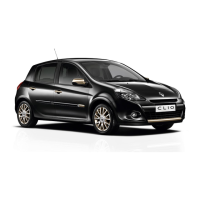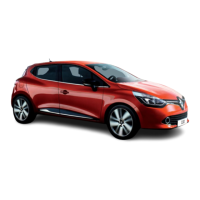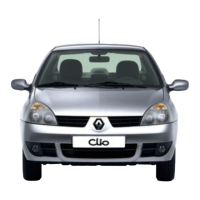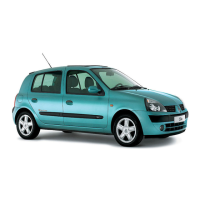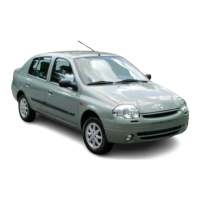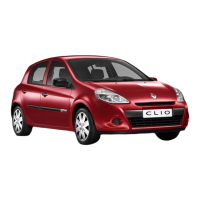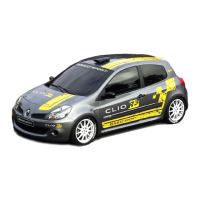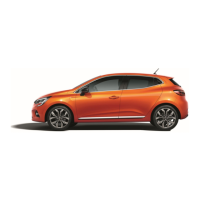
Do you have a question about the Renault CLIO 2019 and is the answer not in the manual?
| Brand | Renault |
|---|---|
| Model | CLIO 2019 |
| Category | Automobile |
| Language | English |
Explains the general use, functions, and operation of the remote control key and key card.
Describes procedures for locking/unlocking doors and opening/closing them manually or remotely.
Provides guidance on always wearing seat belts, adjusting driving position, and proper seat belt use.
Offers general information on carrying children safely, risks of injury, and using child seats.
Details the visual installation of child seats using the ISOFIX system, including anchorage points and compatibility.
Explains driver's position, controls, and adjustments for LHD and RHD vehicles.
Guides on starting and stopping the engine using key and card systems, with safety precautions.
Details the Stop and Start system's operation, conditions for engine standby, and how to manage it.
Explains the electronic parking brake operation and the AUTOHOLD function for vehicle immobilization.
Covers systems like ABS, ESC, Lane Assist, Blind Spot Warning, Parking Aids, and Cameras.
Explains Speed Limiter, Cruise Control, and Adaptive Cruise Control functions for speed management.
Enables choice between driving modes affecting steering, lighting, comfort, and sound.
Explains automatic and manual climate control, including ventilation, temperature, and de-icing functions.
Details the multimedia screen, sockets (USB, Jack), steering column controls, and radio.
Explains electric windows operation, remote closing, and interior lighting controls like courtesy and map lights.
Details various storage compartments including door pockets, dashboard, console, and rear seat storage.
Details bonnet unlocking, opening, and closing, with safety warnings for engine compartment work.
Explains how to read engine oil level, normal consumption, and warnings for exceeding maximum level.
Covers checking and topping up coolant and brake fluid, and details replacement intervals for filters.
Explains how to check tyre pressures, safety precautions, and the tyre pressure loss warning system.
Provides information on battery maintenance, charge status, and troubleshooting common issues like starting problems.
Gives advice on washing the vehicle, handling corrosive agents, and cleaning interior surfaces.
Covers dealing with punctures, using spare wheels, and changing a wheel with safety precautions.
Explains the use of the tyre inflation kit for temporary repairs, including safety and usage precautions.
Lists and describes vehicle tools, including wheelbrace, jack, hubcap tool, and instructions for wheel trim removal/refitting.
Guides on replacing bulbs for front and rear lights, indicators, and interior lighting.
Covers replacing batteries for remote control keys and hands-free cards, including precautions and availability.
Explains fuse box locations and how to check and replace fuses, with warnings about rating and fire hazard.
Provides instructions for replacing windscreen and rear screen wiper blades, including service position and precautions.
Guides on unlocking the steering column, towing with automatic gearboxes, and using towing points safely.
Lists common operating faults with possible causes and actions for the card, remote control, and starter.
Explains vehicle and engine identification plates, including VIN, manufacturer, and engine details.
Provides vehicle dimensions in metres and weights including permissible loads and towing limits.
Lists engine types, cubic capacity, and compatible fuel types, including European standards for petrol and diesel.
Emphasizes using genuine replacement parts for optimal performance and warranty, and general repair advice.
Provides templates for recording service and anti-corrosion check details: date, miles, invoice number, and comments.
Details corrosion repair operations and dates, with diagrams indicating repaired areas for warranty continuation.
